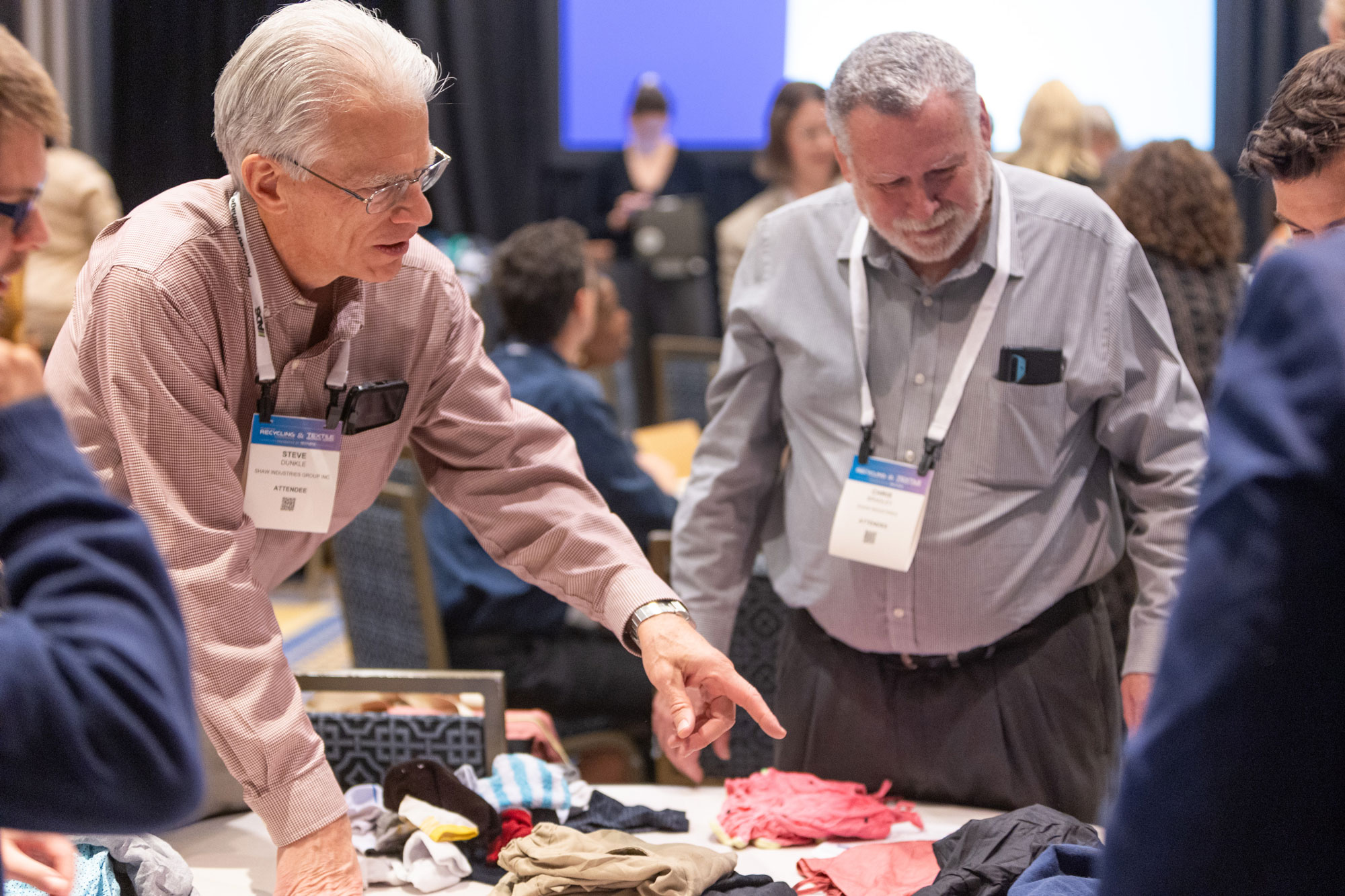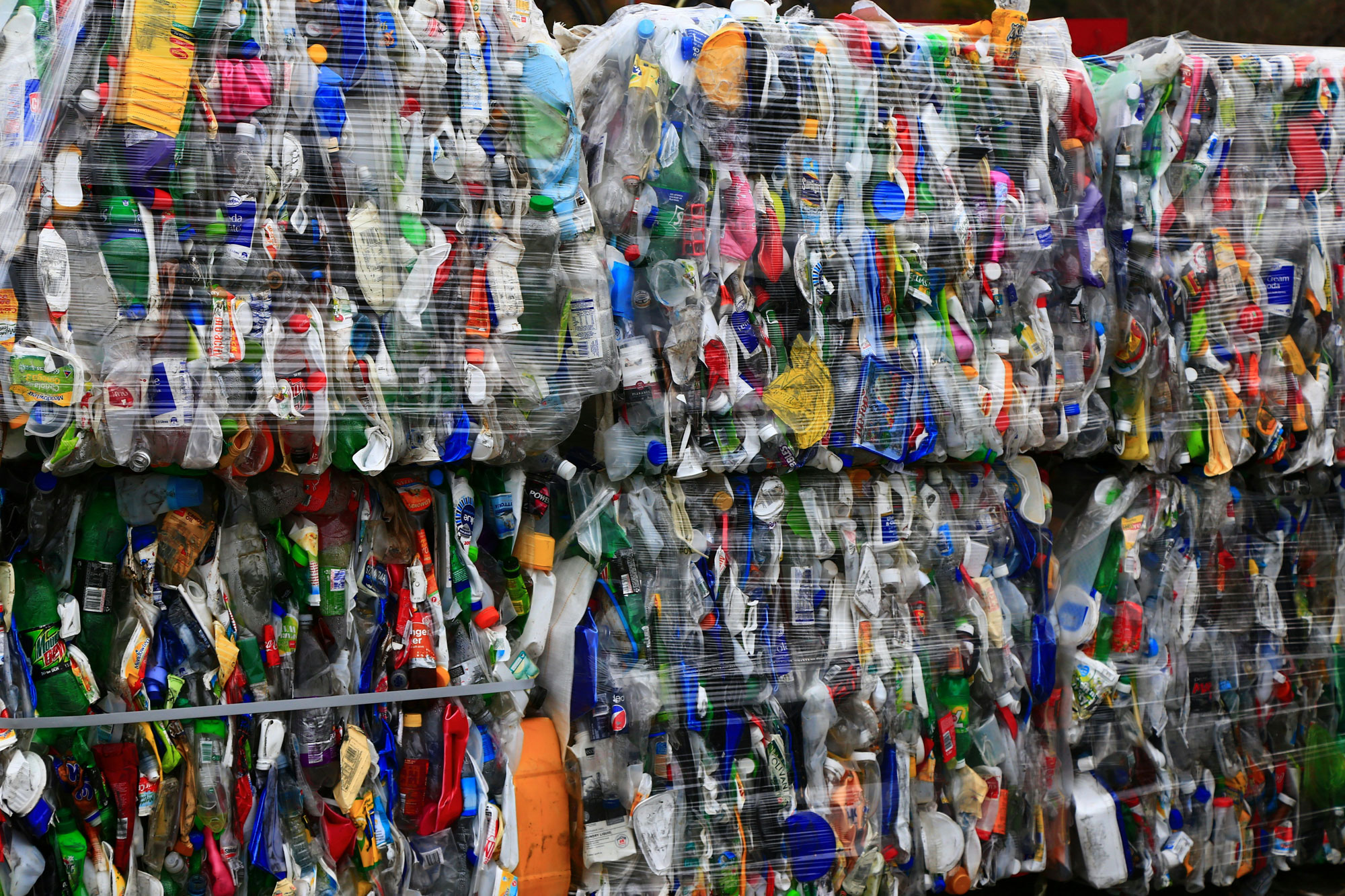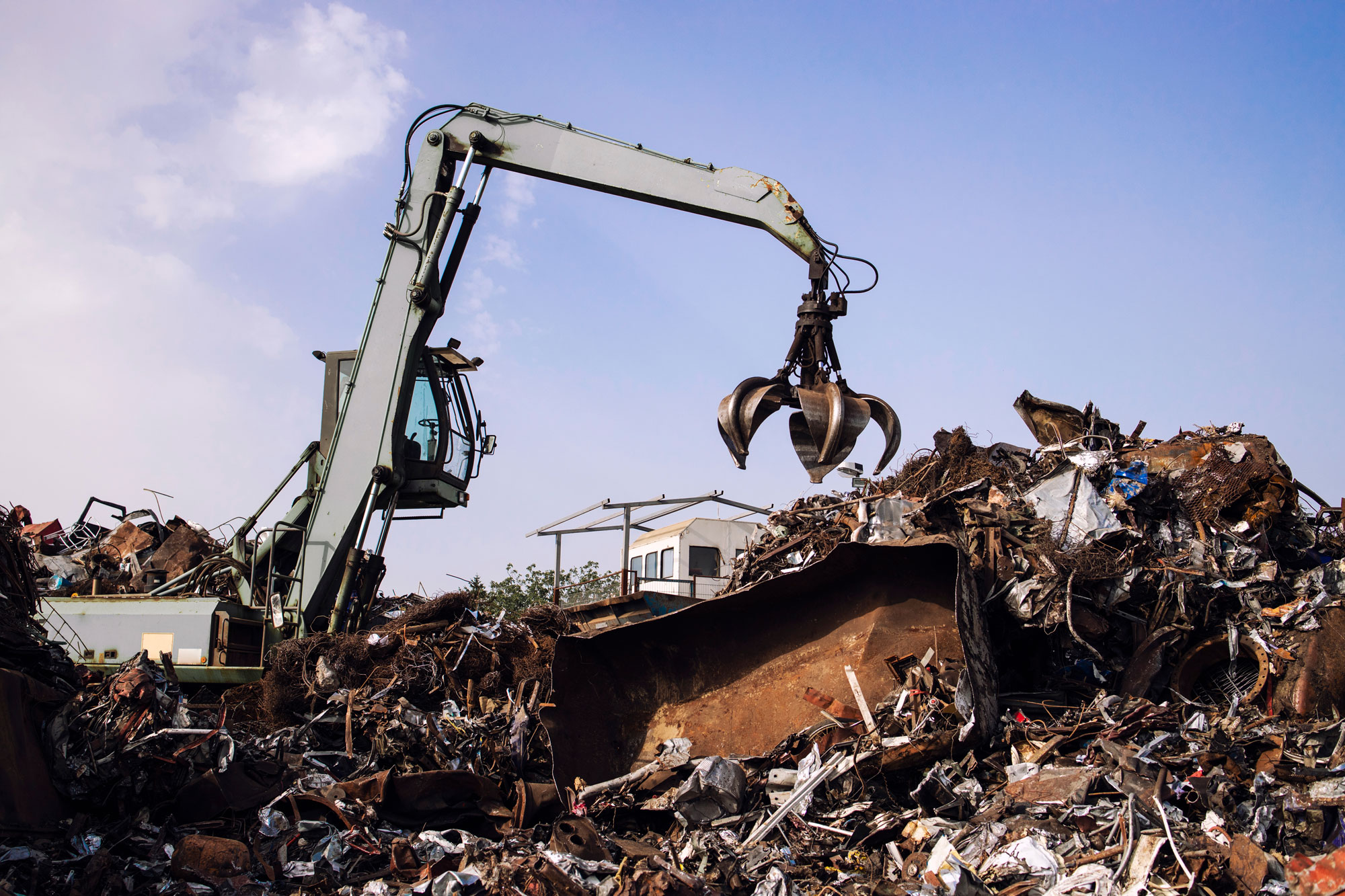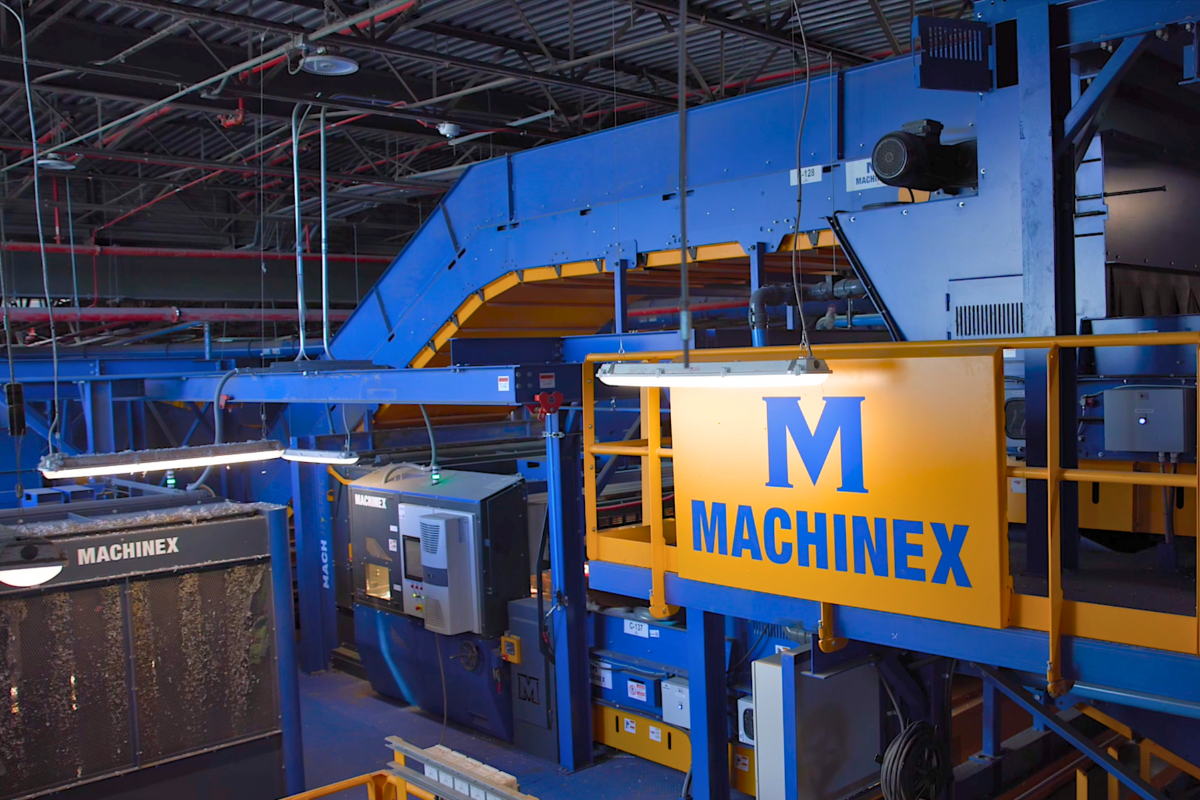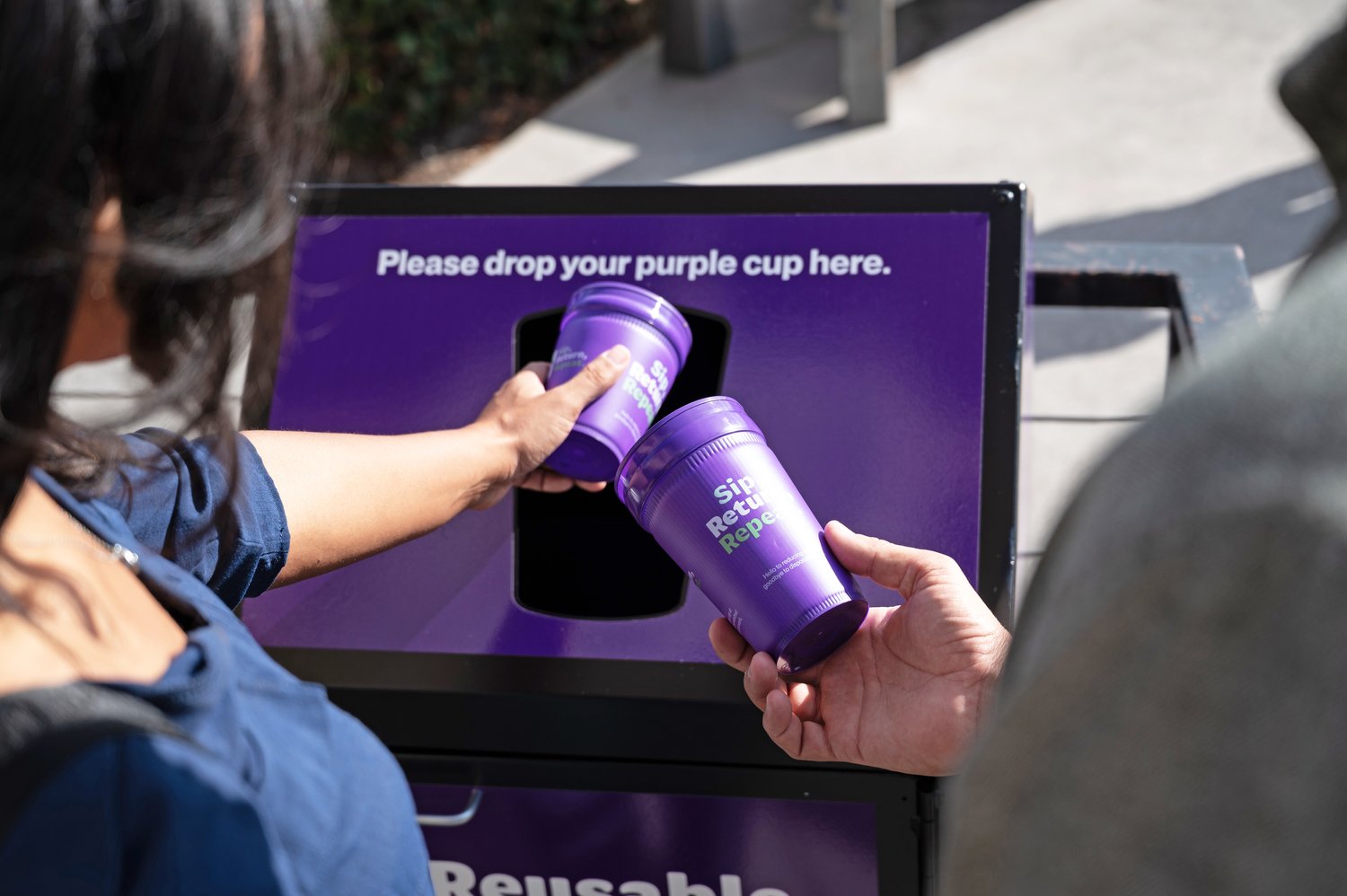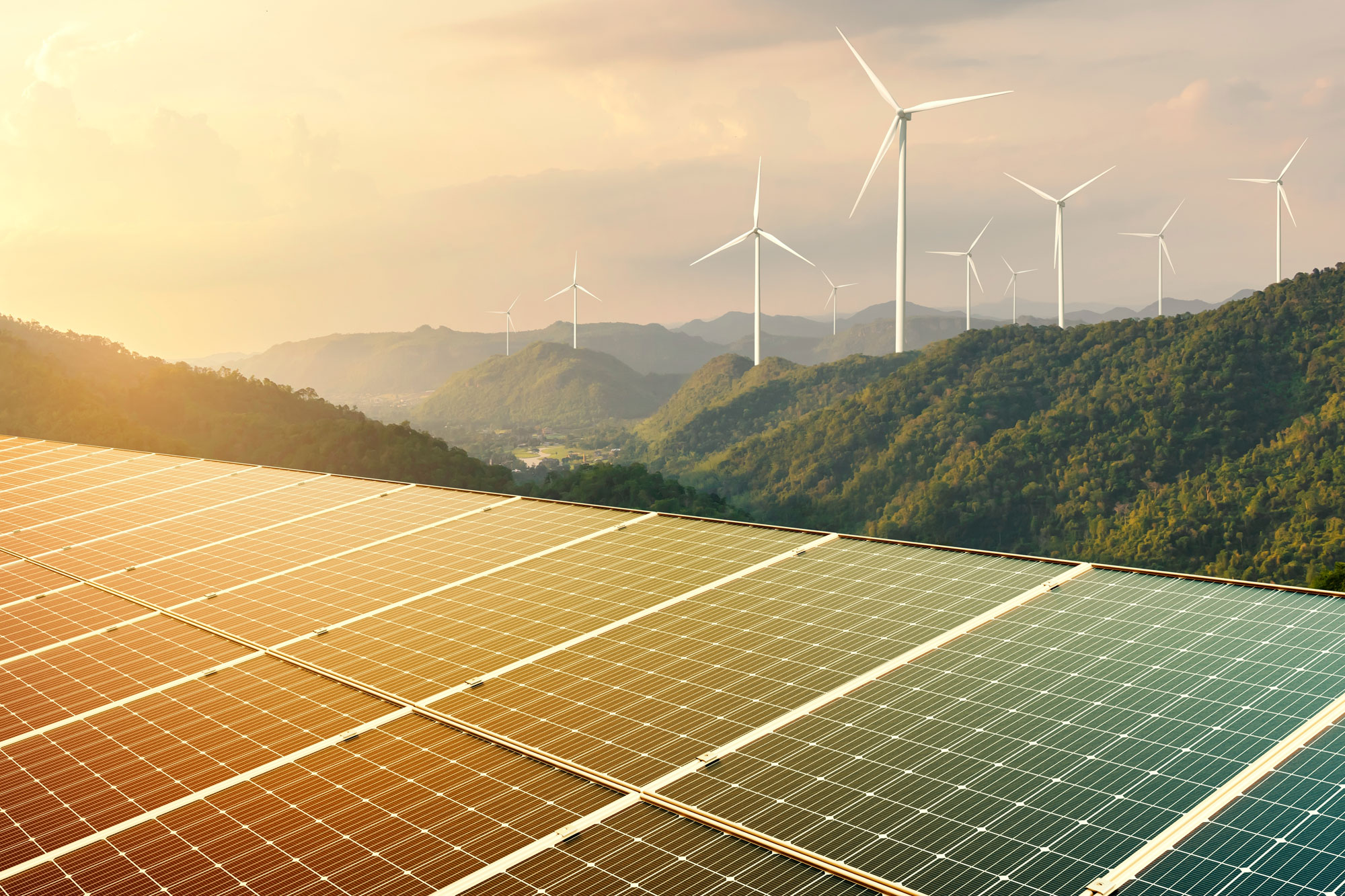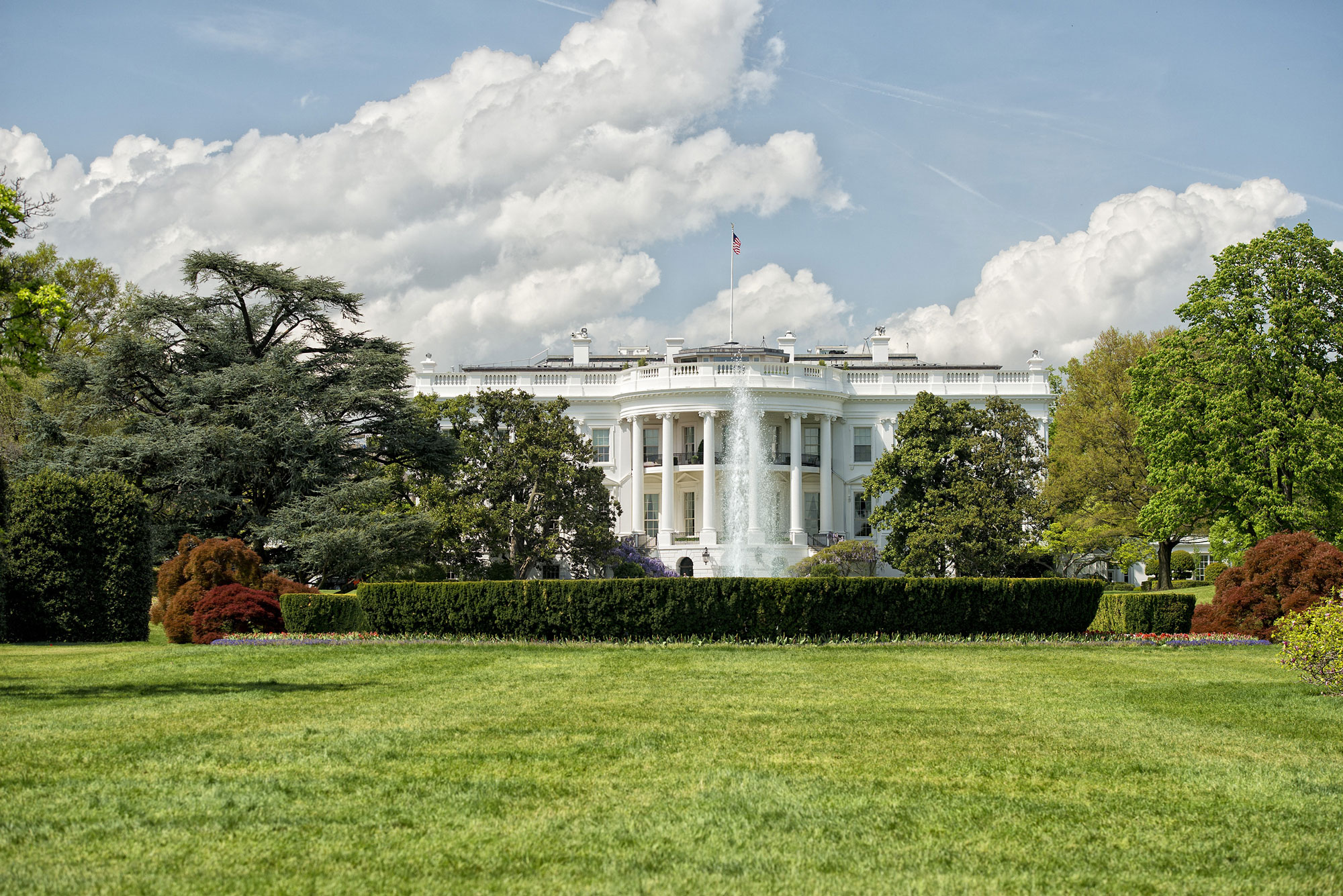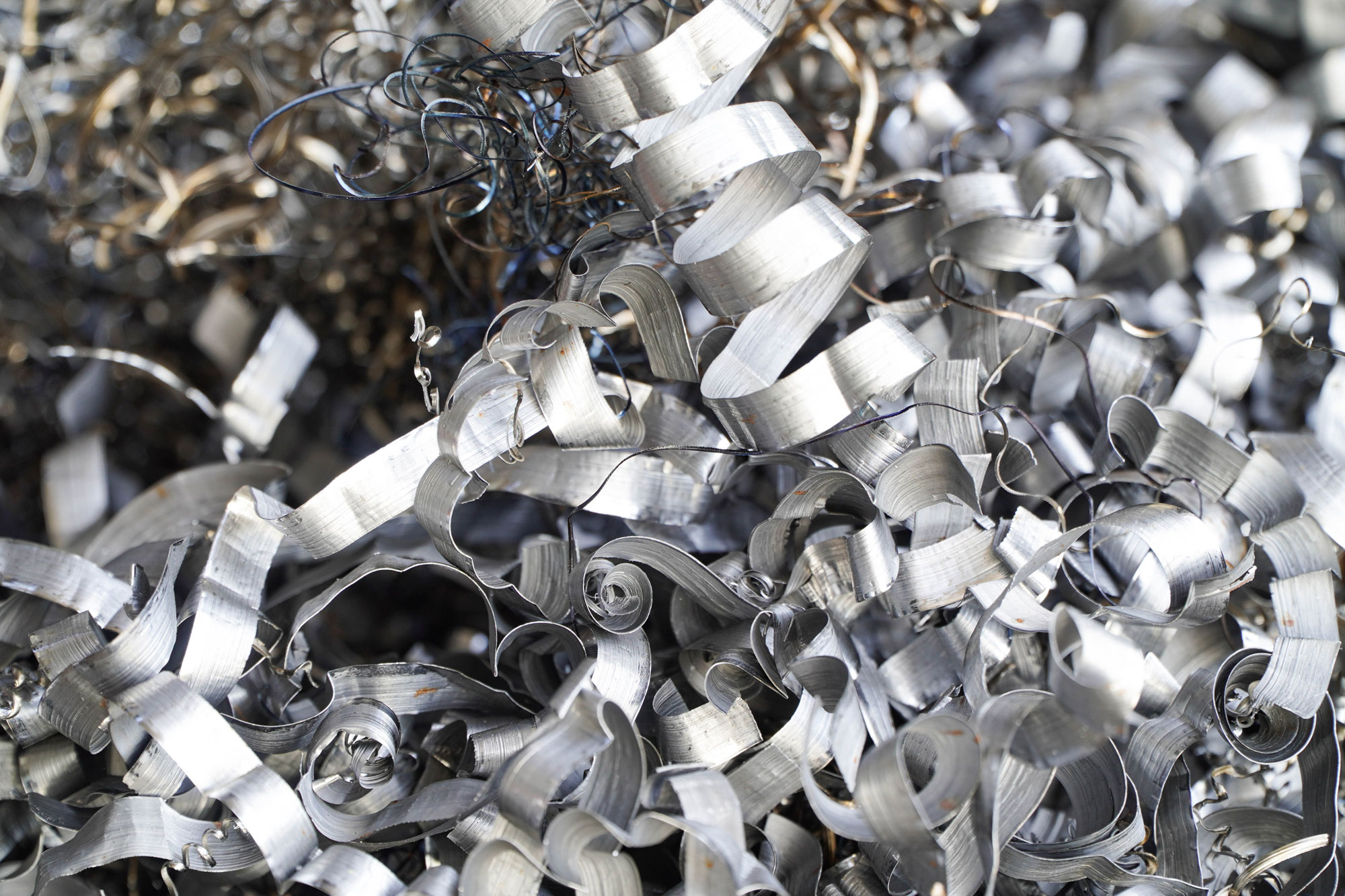
Through a hail of executive and court orders and related uncertainty over federal funding, Recycling Education and Outreach grant recipients worked to pick up where they left off. | Andrea Izzotti/Shutterstock
This article appeared in the March 2025 issue of Resource Recycling. Subscribe today for access to all print content.
Jan. 20
The 26 executive orders signed by President Donald Trump on his first day in office unleashed weeks of missing funding and confusion for recycling programs across the country — problems that have yet to reach a clear conclusion.
Titled “Unleashing American Energy,” one executive order directed all agencies to “immediately pause the disbursement of funds” from the 2021 Infrastructure Investment and Jobs Act, often called the Bipartisan Infrastructure Law, and the 2022 Inflation Reduction Act, to ensure that federal spending aligned with the Trump administration’s priorities.
The two laws had dedicated hundreds of millions of dollars to new recycling facilities and other initiatives, such as the U.S. EPA’s Recycling Education and Outreach program and its Solid Waste Infrastructure for Recycling, or SWIFR, grants.
Another order told federal officials to “coordinate the termination of all discriminatory programs, including illegal DEI and ‘diversity, equity, inclusion, and accessibility’ (DEIA) mandates, policies, programs, preferences, and activities in the Federal Government, under whatever name they appear.”
Though a huge variety of programs throughout the government have been affected, the Recycling Education and Outreach program, which emphasized environmental justice and reaching multicultural and underserved communities, sits at the crux of these two orders. Below is an account of the administration’s early moves through REO grantees’ perspectives.
Jan. 27
The nonprofit Oregon Community Warehouse in Portland collects donated furniture and other home goods for formerly homeless families, refugees and others in need, which helped it secure a $1.6 million REO grant to spread awareness of its services, especially among the city’s multicultural communities, Communications Manager Phil Gerigscott said.
“As far as we know, we are still receiving funding and that won’t change,” he said, adding he had accessed some of the grant dollars as recently as Jan. 23. “We’re definitely a little nervous, but it seems like hopefully still smooth sailing.”
The organization has long relied solely on word-of-mouth, so the grant was meant for more staff members and contractors, updating the center’s website and developing culturally specific ads — after English, Portland’s most common languages include Spanish, Chinese, Ukrainian and Arabic, Gerigscott said.
The warehouse’s EPA contacts generally had been easy to reach, Gerigscott added. But he hadn’t heard more details about the order. The agency also didn’t return Resource Recycling’s request for comment at the time.
“We’re under the assumption that no news is good news,” Gerigscott said.
Near the end of the day, a new memo from the White House’s Office of Management and Budget vastly broadened the scope of multiple funding pauses like the “Unleashing American Energy” order.
“Each agency must complete a comprehensive analysis of all of their Federal financial assistance programs to identify programs, projects, and activities that may be implicated by any of the President’s executive orders,” wrote Matthew J. Vaeth, the OMB’s acting director.
“In the interim, to the extent permissible under applicable law, Federal agencies must temporarily pause (bolded in original) all activities related to obligation or disbursement of all Federal financial assistance, and other relevant agency activities that may be implicated by the executive orders, including, but not limited to, financial assistance for foreign aid, nongovernmental organizations, DEI, woke gender ideology, and the green new deal.”
Jan. 28
Uproar against the halted funding came swiftly, with the National Council of Nonprofits and others arguing in the U.S. District Court of Washington, D.C., that the administration didn’t have the authority to cancel Congress’s appropriations and was violating their constitutional freedoms of expression and assembly. In response, District Judge Loren L. AliKhan placed an administrative stay on the freeze lasting several days.
Meanwhile, the Hampton Roads Planning District Commission in Virginia, which had been awarded a $2 million REO grant for a “Start Smart, Recycle Right” outreach campaign, received an email that afternoon from its EPA contact.
“EPA is working diligently to implement President Trump’s Unleashing American Energy Executive Order issued on January 20 in coordination with the Office of Management and Budget,” the EPA wrote. “The agency has paused all funding actions related to the Inflation Reduction Act and the Infrastructure Investment and Jobs Act at this time.”
Gerigscott shared a similar message by text: “We just received official word that funds are halted until further notice.”
At a press conference, Trump Press Secretary Karoline Leavitt reiterated that the pause was temporary and said she had spoken with Trump’s then-unconfirmed nominee for OMB director, Russell Vought.
“He told me to tell all of you that the line to his office is open for other federal government agencies across the board, and if they feel that programs are necessary and in line with the president’s agenda, then the Office of Management and Budget will review those measures,” Leavitt said.
Jan. 29
Lynn Onstot, spokesperson for the city of Joplin, Missouri, said the city’s REO project was still in its early stages of data-gathering, but its funding hadn’t been affected. Joplin was awarded $1.7 million for a multimedia advertising campaign with a particular focus on partnering with schools, reaching residents of disadvantaged census tracts and increasing participation in Joplin’s opt-in curbside program.
After the administrative stay, Vaeth at the OMB released a two-sentence memo rescinding his earlier one. On the social media site X, Leavitt noted that the early executive orders, including the ones affecting the infrastructure law, weren’t rescinded.
“This is NOT a rescission of the federal funding freeze,” she wrote. “It is simply a rescission of the OMB memo. Why? To end any confusion created by the court’s injunction. The President’s EO’s on federal funding remain in full force and effect, and will be rigorously implemented.”
Jan. 30
Walking Mountains Science Center in Eagle County, Colorado, was on the cusp of starting in earnest its $570,000 project to train recycling advocates among local Spanish speakers, said Amelia Kovacs, the center’s sustainability programs manager.
“Our grant is very second-half heavy, with creating a drop site, actually tracking beginning and end diversion rates in those priority communities,” she said, and several people were recruited and hired.
The organization had put in a draw-down request for some of its funding the day before, but it hadn’t gone through yet, and the EPA had sent no clarification.
“We’ve been asking them many times, ‘so should we be worried?’” Kovacs said. “It’s clear as mud.”
The organization leans heavily on local and state funding and can carry on without the REO grant, she said. But she’ll likely have to sharply scale down the REO project, if it can continue at all, perhaps by reframing it to support the rollout of the state’s extended producer responsibility policy.
By this point, the administration had eliminated multiple programs protecting civil rights, cancelling the Biden administration’s environmental justice initiatives, suspending refugee aid and putting a freeze on the Justice Department’s civil rights enforcement after rescinding an executive order dating back to the Civil Rights Era that, in its present-day form, banned federal contractors from discriminating against employees because of race, color, religion, sex, sexual orientation, gender identity or national origin.
Trump and other officials have said diversity initiatives amount to reverse discrimination.
“In my personal eyes, I see this as a tactic to scare, and for people to kind of shift their eyes away from the good work that is happening in our community,” Kovacs said of the administration’s actions. She wasn’t discouraged from working to reach disadvantaged residents, she added.
“It’s even more reason why we should exist. It gives me more fire, I would say, to continue my work, because to me it feels more necessary than ever.”
Jan. 31
In the U.S. District Court of Rhode Island, another lawsuit against the funding freezes brought by 22 states and D.C. led to a temporary restraining order against the administration, during which the judge said no funding could be frozen.
“Defendants shall also be restrained and prohibited from reissuing, adopting, implementing, or otherwise giving effect to the OMB Directive under any other name or title,” wrote Chief Judge John J. McConnell, Jr.
Back in Virginia, the Hampton Roads Planning District Commission received another message from an EPA official: “Funding has been paused for grants under the Infrastructure Investment and Jobs Act at this time. This pause pertains to all funding on existing grants for the SWIFR and REO grant programs. The pause on these grants remains in place even though it has been lifted for other federal grant programs. We will provide more guidance as EPA’s Office of Grants and Debarment makes it available to our program.”
Feb. 3
Judge AliKhan in D.C. granted a similar temporary restraining order, drawing on two centuries of legal tradition to find that the freezes implicated issues of nationwide importance.
“Defendants’ actions appear to suffer from infirmities of a constitutional magnitude,” AliKhan wrote. “The appropriation of the government’s resources is reserved for Congress, not the Executive Branch. And a wealth of legal authority supports this fundamental separation of powers.”
Feb. 6
Amid the back and forth, the Ciudad Soil and Water Conservation District in New Mexico slowed but didn’t halt its work on a $590,000 grant for collaborating with local schools and other partners in low-income and disadvantaged areas, District Manager Joshua O’Halloran said. It seemed like the EPA was loosening up with the money, so he told staff to work on it on an as-needed basis.
A year into the project, people have been hired and food-scrap composting programs have rolled out at a big middle school and a senior center.
“It’s kind of delayed us and caused a lot of conversations with partners,” O’Halloran said. “We have the risk of losing trust with them, and that was a bigger deal than anything.”
The whiplash from the last administration’s requirements to the current one’s has been confusing and difficult to navigate, he added. The organization’s $3.8 million yearly budget is 98% grant-funded, meaning that there’s no backup money and the REO project can’t continue without its grant. But “regardless of what an administration or the EPA says, we’re going to stick to what’s true for us,” he said.
“Working with all of those people as our constituents is what’s important to us,” O’Halloran added. “We’re not going to change who we are because somebody in Washington tells us that’s what’s important to them.”
Feb. 10
The Chicago-area Metropolitan Mayors Caucus’s last word from the EPA was to pause its $2 million REO grant, said Edith Makra, director of environmental initiatives.
“We were going great guns; in fact, I was supposed to have new staff, my new recycling education and outreach coordinator, starting last Wednesday,” she said. But she couldn’t make a commitment to a new hire.
“We are very, very angry about this,” Makra said. “It’s a kick in the gut to the work that we’re doing across the board.”
Other federal agencies with grants to the caucus have resumed those grants, she added. If EPA’s didn’t, the group wouldn’t have the resources to continue its advertising campaign.
“It’s paused, so I can’t speculate on what that means. It’s not rescinded, and they’re not trying to do a clawback,” Makra said. “But this grant is underway; we’re doing the work, and I never ever would have expected this to happen.”
Back in the Rhode Island District Court, the judge found federal agencies had been disobeying his previous order and keeping funds frozen, ordering them immediately to comply.
Feb. 11
Kerrin O’Brien, executive director of the Michigan Recycling Coalition, said her organization had no trouble accessing its REO grant and had gone ahead and hired two people to meet the grant’s obligation, despite the EPA’s message to pause work.
“We’re bearing that risk right now and committed to our people,” she said.
O’Brien saw the program as vulnerable to the administration’s rejection because of its environmental justice goals, she said, but the work is nonetheless worthwhile.
“Whatever we call it — Justice40, DEI, whatever — there is still demonstrated need throughout Michigan — rural, urban, subrural, suburban — to help people understand how recycling works, how they can participate correctly,” she said. “All of these systems and programs aim to make our economy more productive, aim to make our natural resources work more for us. All Michigan residents really need to know how to participate in effective ways.”
Bob Crum, executive director of the Hampton Roads Planning District Commission, shared similar sentiments.
“This is critical, critical money for us,” he said. “This money was really going to be some important outreach.”
Feb. 12
Hampton Roads received this message from the EPA: “Thank you for your patience. At this point, we can move forward to resume all grant activities with our existing REO grantees, and work to ensure that these grant funds are spent appropriately.”
Feb. 13
O’Halloran at the Ciudad Soil and Water Conservation District in New Mexico said he received a similar message. Could the organization pick up where it left off? “That’s what we’re hoping,” he said.
Feb. 17
Makra said she still hadn’t gotten word of an end to the pause.
“That would be music to my ears,” she said. “You give me hope, though.”
Feb. 20
In an email, EPA spokesperson Molly Vaseliou said: “EPA worked expeditiously to enable payment accounts for IIJA and IRA grant recipients, so funding is now accessible to all recipients.”



